Biology Laboratory in a high school is where we learn about different biological aspects of nature. We explore cells & tissues of plants and animals through a compound microscope, learn about the bones and body structure through Human Skelton, visualize important organs like the heart through biological models & learn different organ systems through educational charts. Further, we also explore various species through preserved specimens kept in Glass jars.
So, let us learn about the basic Biology lab equipment that we can find in a school:
1. Safety apparatus: The foremost and most important thing to keep in mind is definitely the safety of the students and other people handling experiments in a lab. The safety apparatus consists of safety goggles, lab apron, and latex gloves. Shoes are a must and any kind of sandals or slippers should not be worn in the labs.
The safety goggles protect us from eye irritation that may arise from any chemical or fumes present there. In case of any accidental splashing of chemicals or acids, it also protects us from the blindness of the eyes.
Lab aprons is worn to protect our body from splashing chemicals and acids. Further, it also helps us to protect our clothes while working in a lab.
The latex gloves are very useful in handling chemicals, acids, or any specimens to prevent direct contact of these chemicals with the bare hands and skin.
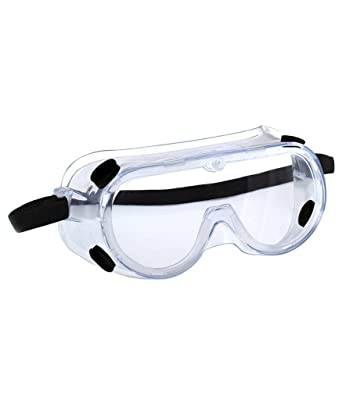
2. Microscope:
A microscope is a very basic and needful equipment of any lab. A simple light microscope (compound microscope) is the one, which is mostly seen in schools and colleges and it uses light and a series of magnifying lenses to observe a tiny specimen.

3. Test tubes and test tube racks: Test tubes are usually cylindrical pipes made up of glass, with a circular opening on one side and a rounded bottom on the other. They come in different sizes but the most common standard size is 18*150 mm.
Test tubes are one of the most important apparatus as they are functional from storing to mixing reagents in any chemical or biological reactions. They become very handy when a large number of samples need to be tested for qualitative assessment of any test.
The test tube rack is the equipment functional in holding the test tubes.
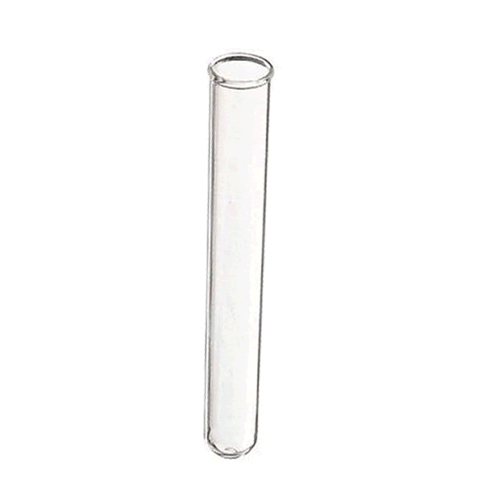
4. Dissecting tool kit: In school levels, for attending biology practical, students are instructed to bring their own dissecting tool kit which usually contains of a scalpel, pins, probes, scissors, a glass slide, a dissecting knife, coverslips, etc.
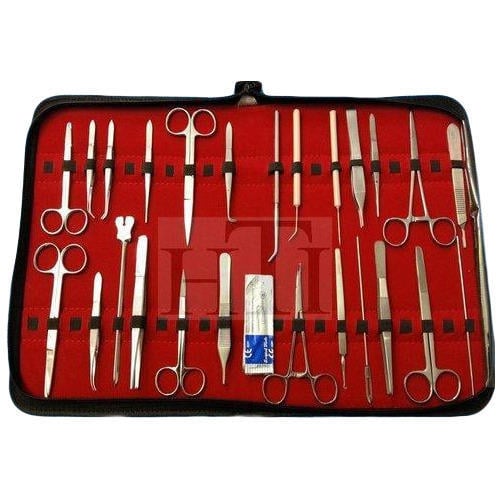
5. Hot plate: This equipment is used to heat materials in the lab, mostly glasswares and their contents. Some come up with magnetic stirrer, allowing the heated liquid to get stirred automatically. This stirring reduces the temperature of the glassware and it also slows down the rate of heat exchange thus encouraging even heating of the content.
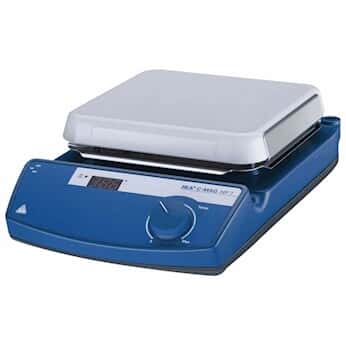
6. Electronic balance: These weighing machines are used to find the mass of a specimen.
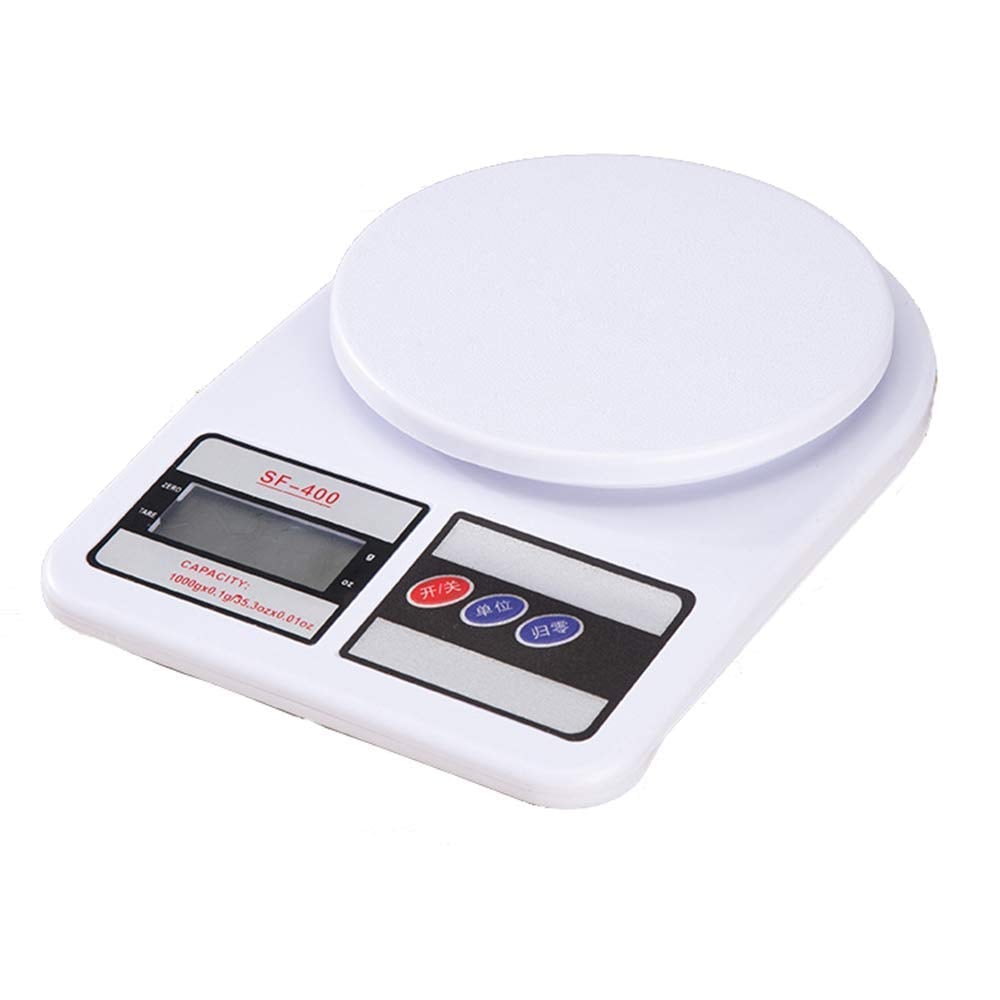
7. Forceps: They are helpful in picking up small objects.
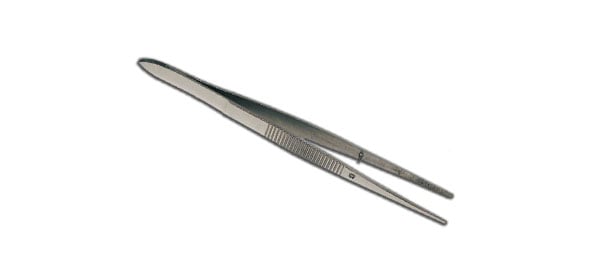
8. Beakers: Beakers are cylindrical utensils made up of borosilicate glass, with a flat bottom and the upper opening having rim around it along with a spout. The spout on their rim’s aids in the proper pouring of solutions and they do not have any covering on the top. Most of the time watch glasses are used to cover their solutions. They are of varying sizes and are used to hold, heat, or mix substances with the proper measure. Although they come with graduated calibrations, they are not meant for precise calculations of solutions and as other apparatus come handy in this.
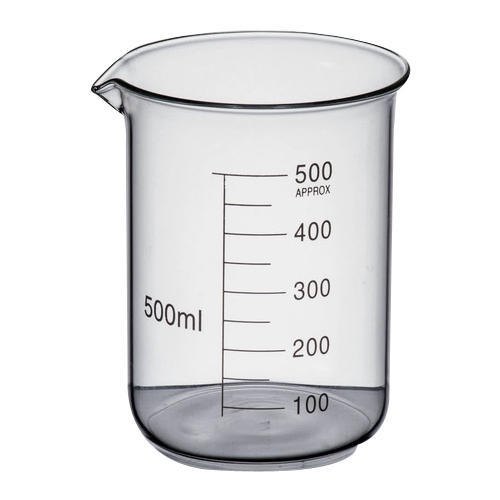
9. Conical flasks: Conical flask, also known as Erlenmeyer flask, is an apparatus having a flat bottom and a long narrow neck, which allows easy mixing of the solution without spilling out the content. Since the flask has a narrow long neck, it is also used to gently heat the content inside with a gentle swirling motion of the flask. The flask can also be covered using a rubber cap or cork.
One should always remember never to heat any flask with its cap on as it will lead to pressure and gas build up inside the closed flask and lead to explosions.
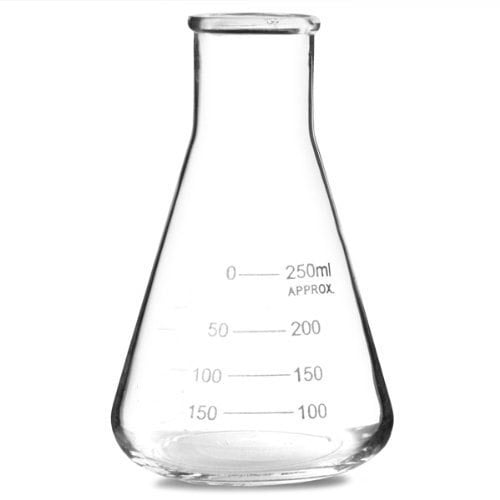
10. Evaporating dish: This equipment is used to evaporate liquids out of sample substances.
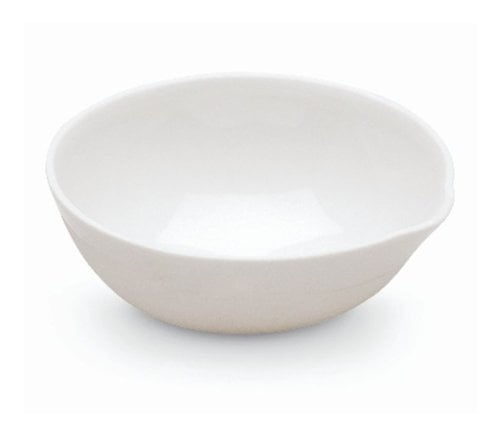
11. Funnels: Funnels are necessary equipment to pour substances and solutions in narrow-mouthed test tubes and conical flasks. There is a variety of its available, most common ones are filter, thistle, and dropping funnels.
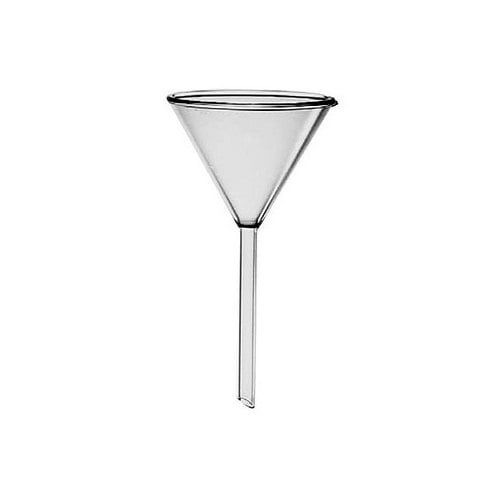
12. Graduated cylinders: These are some cylindrical apparatus with several markings up and down the length of the container with the primary function dealing with proper measurement of a specific volume of liquid with precision. While taking readings, one needs to be careful to take into consideration the reading with respect to the meniscus of the liquid.
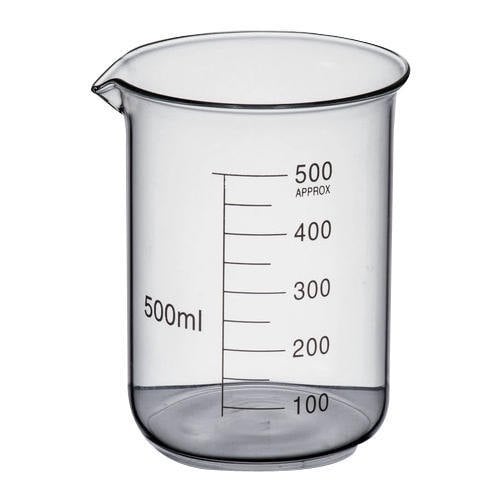
13. Droppers and pipettes:
The dropper, also known as Pasteur pipette, is usually made up of plastic or glass cylinder, having a small nozzle on one side and a rubber holder on the other. It is used to put the liquids or solutions in any medium dropwise, that is, one drop at a time, a necessary equipment when any reagent is required in a precise amount in a solution.
Pipettes are of varying sizes, designed for titration experiments wherein chemicals are mixed in specific volume. These are narrow glass cylindrical pipes, used for measuring an exact volume of liquid and placing it into another container.
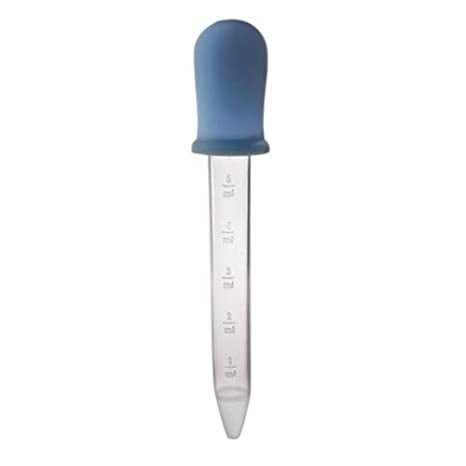
14. Dissecting pan: One of the most discussed biology practicals in higher classes is regarding the dissection experiment performed on cockroaches or frogs. This equipment is used as a pan on which the specimen is kept while it is being dissected to study its internal organs.
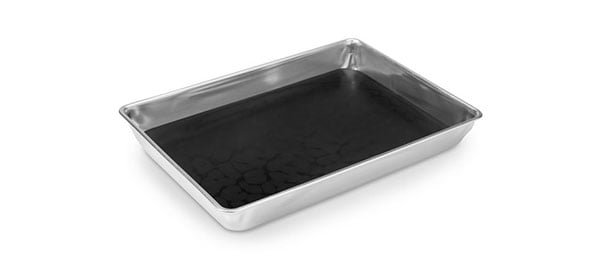
15. Glass slides and coverslips: Varieties of glass slides are available which are used for observation purposes of very small specimens. The microscope slides are used to support an item being examined under the microscope.
Then, there are depression glass slides with a concavity on one surface for better ground support to the specimen.
The coverslips are used to cover specimens on the glass slide to protect from further addition of any chemical or dirt and also to give better view under the microscope.
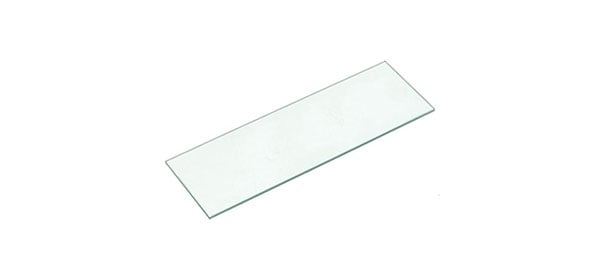
16. Inoculating loops and petri dishes: The inoculating loop is a small apparatus that is used to spread bacteria on a petri dish or a glass slide.
The petri dish are small glass plates with a glass cover and they are used to culture micro-organisms inside.
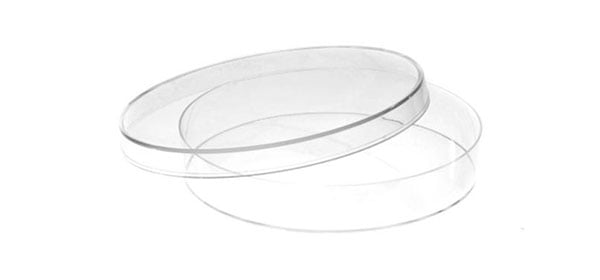
17. Spatulas and scopulas: These laboratory spatulas are very much similar to the kitchen like spatulas found in our home but they are just very smaller in size in comparison. The spatulas are usually resistant to heat and acids, hence making them suitable for large range use in the laboratory experiments.
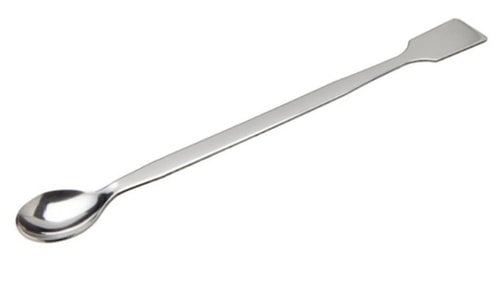
18. Thermometer: Every lab is equipped with a basic thermometer as many a time, certain chemical or biological reaction can be carried out in any particular temperature range only and so to proceed, the thermometer becomes very necessary to measure the temperature of the required solution before moving forward with further reaction procedure.
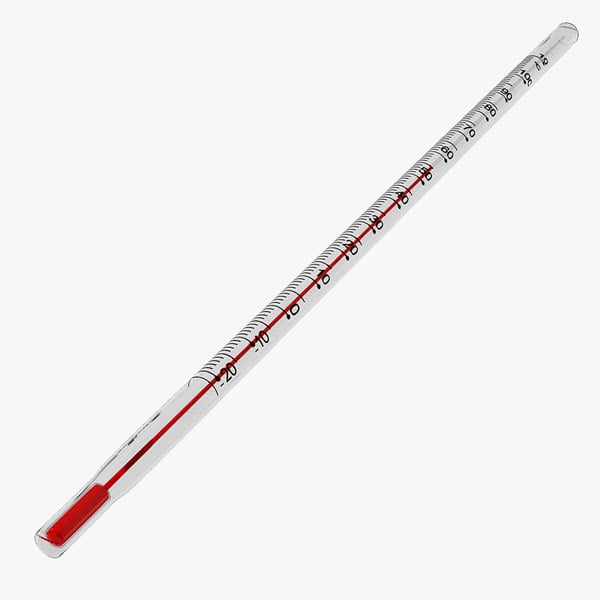
19. Bunsen burner or alcohol burner: This apparatus produces a single open flame and it is used for heating and sterilization purposes in the various experiments conducted in labs.
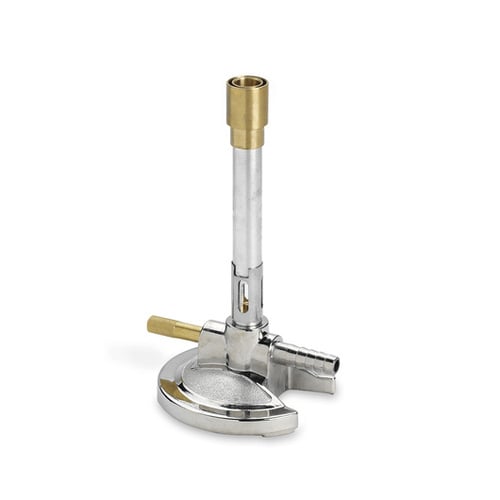
20. Litmus and filter papers:
These two cannot be called apparatus in a proper way, but they serve as one of the most important and basic things that will be required in any kind of laboratories. The litmus paper serves to identify the pH of any solution by changing colors whereas, the filter paper helps in the filtration process.
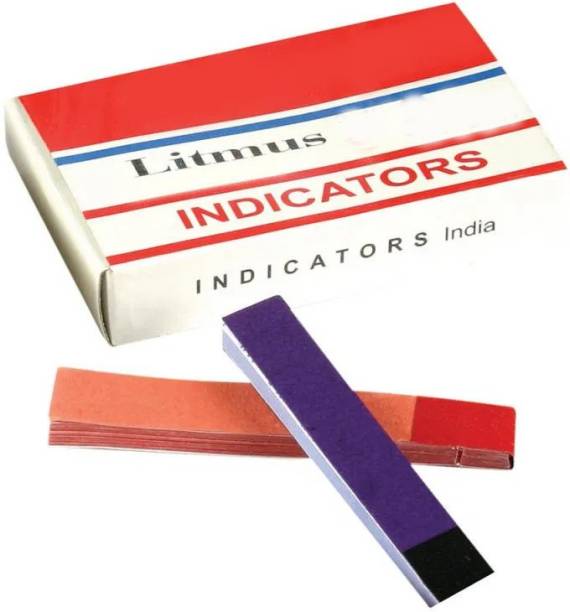
These are the basic 20 Biology Lab equipment that one can witness in any school or college biology labs. Other than these, one will also get to see wash bottles, stirring rods, stopwatch, weighing balance or brushes to clean test tubes. As these apparatuses serve the basic, every student must get familiar with all this equipment and their working to have safe and sound practical experiment experiences in High school biology laboratories.
About Labkafe: Lab Equipment Manufacturer & Exporter
We are a School laboratory furniture and Lab equipment manufacturer and supplier. In laboratory furniture for school, we first design the entire laboratory room keeping in mind the requirements as per affiliation CBSE Bye-Laws. Also, we take care of the complete designing and installation of laboratory furniture.
In the lab equipment section, we have a wide range of glassware, chemicals, equipment and other lab accessories. Most of them are available for order online on our website but some of them can be procured on demand.
If you have need:-
- laboratory equipment or lab furniture requirements for school
- composite lab equipment list for school
- Physics lab equipment list for school
- Chemistry lab equipment list for
- Biology lab equipment list for school
- Pharmacy lab equipment
do drop a message through chat or mail us at [email protected] or call +919007218364 and we’ll get in touch with you.
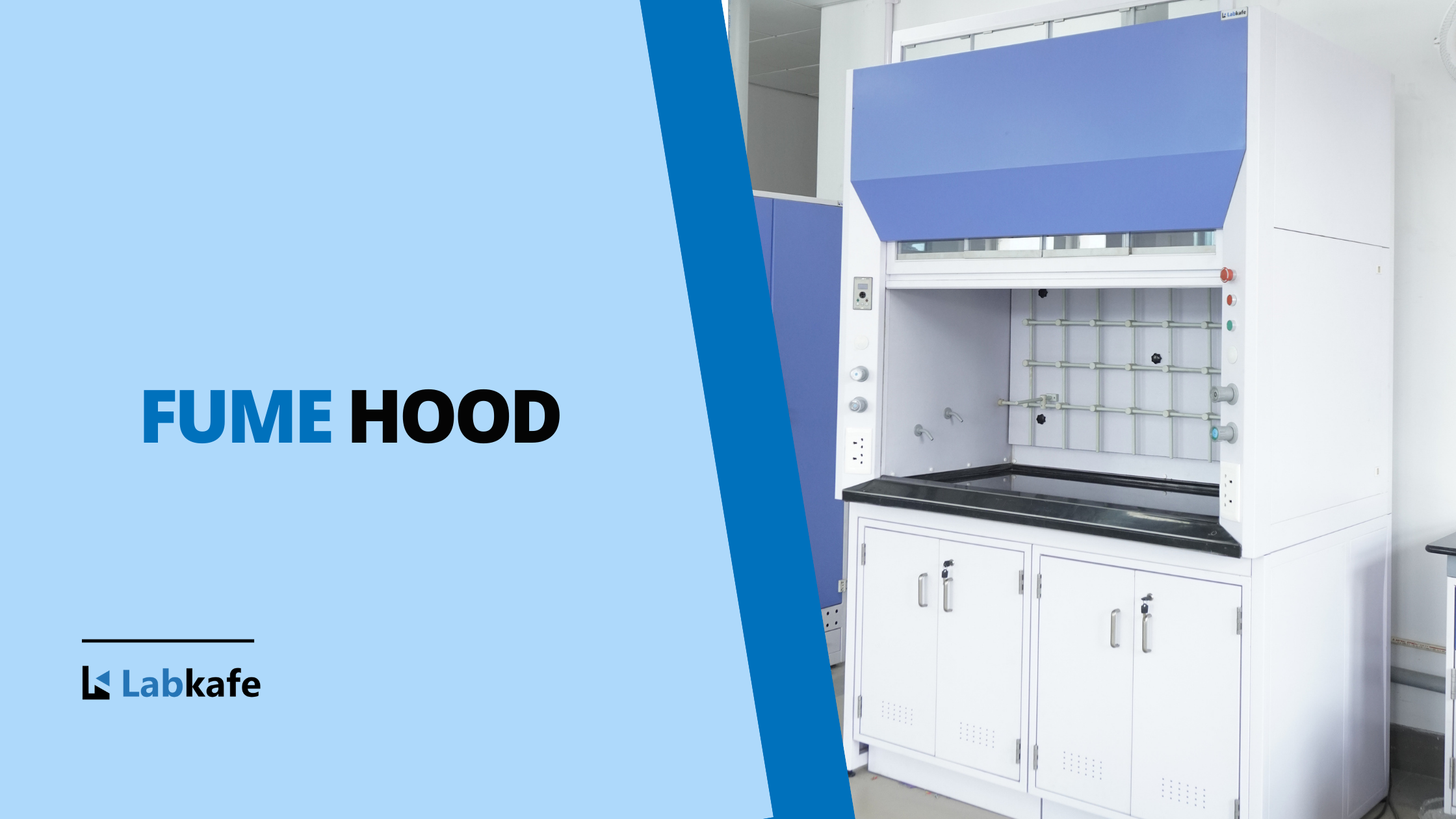
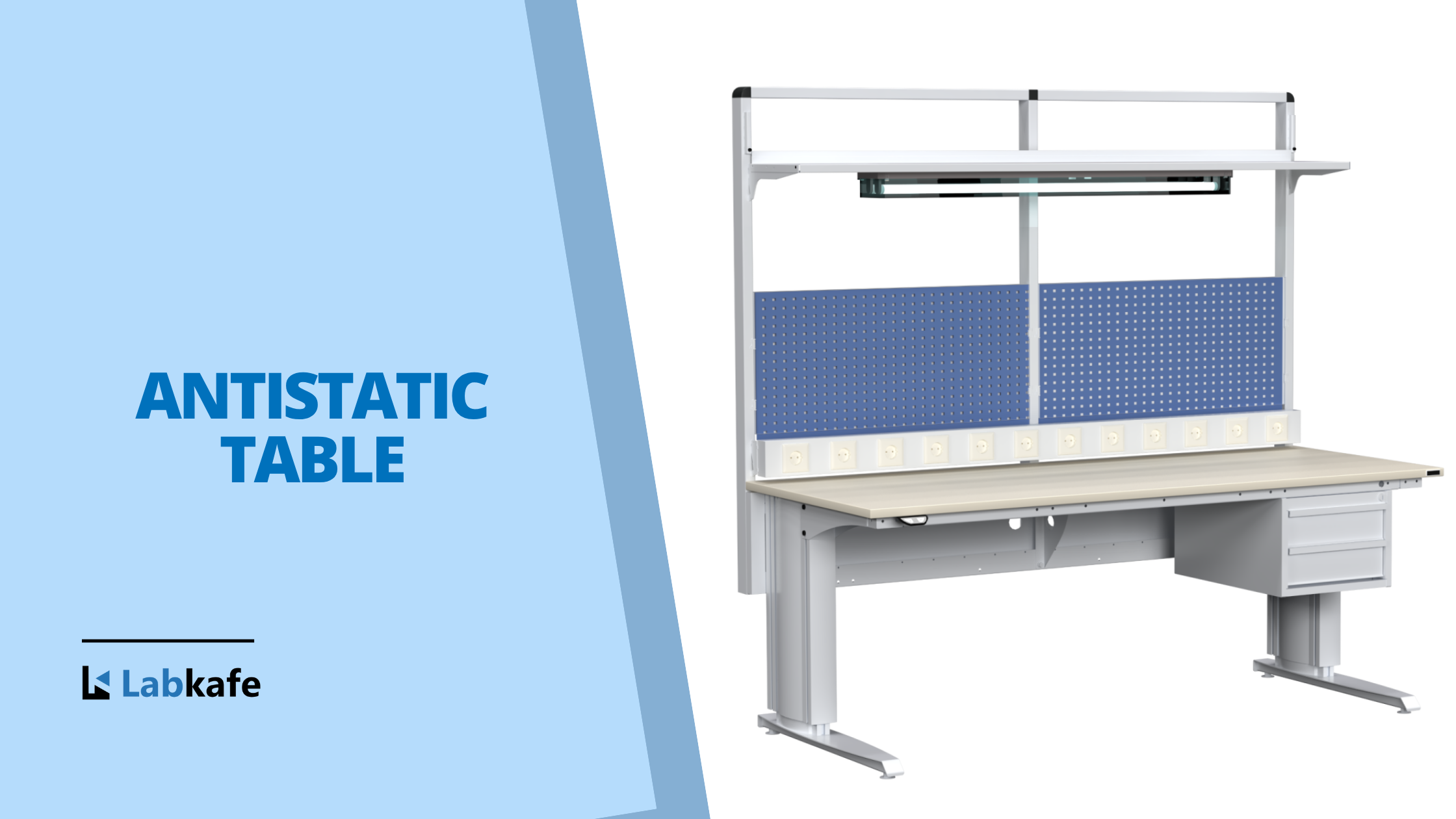
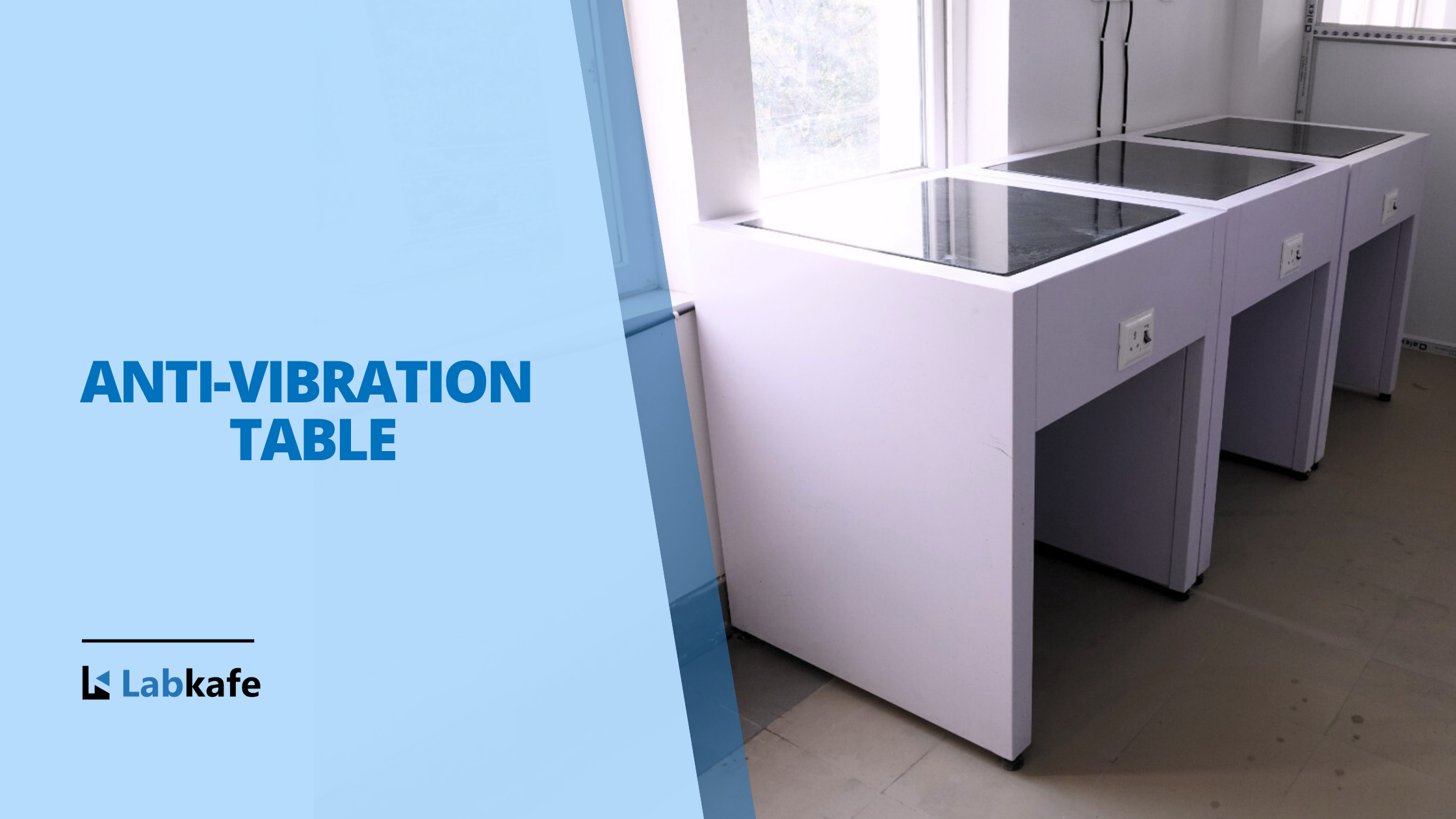
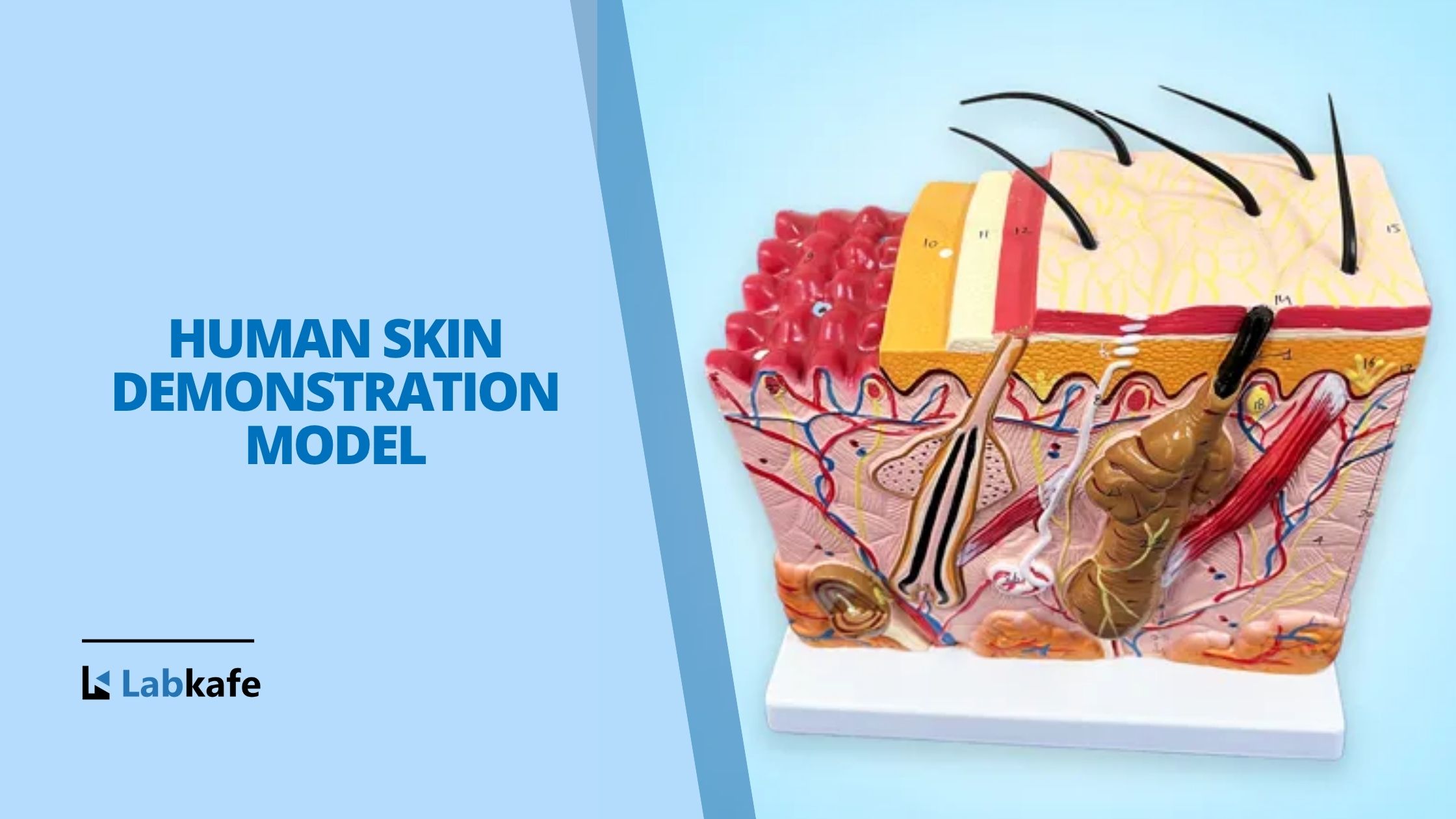
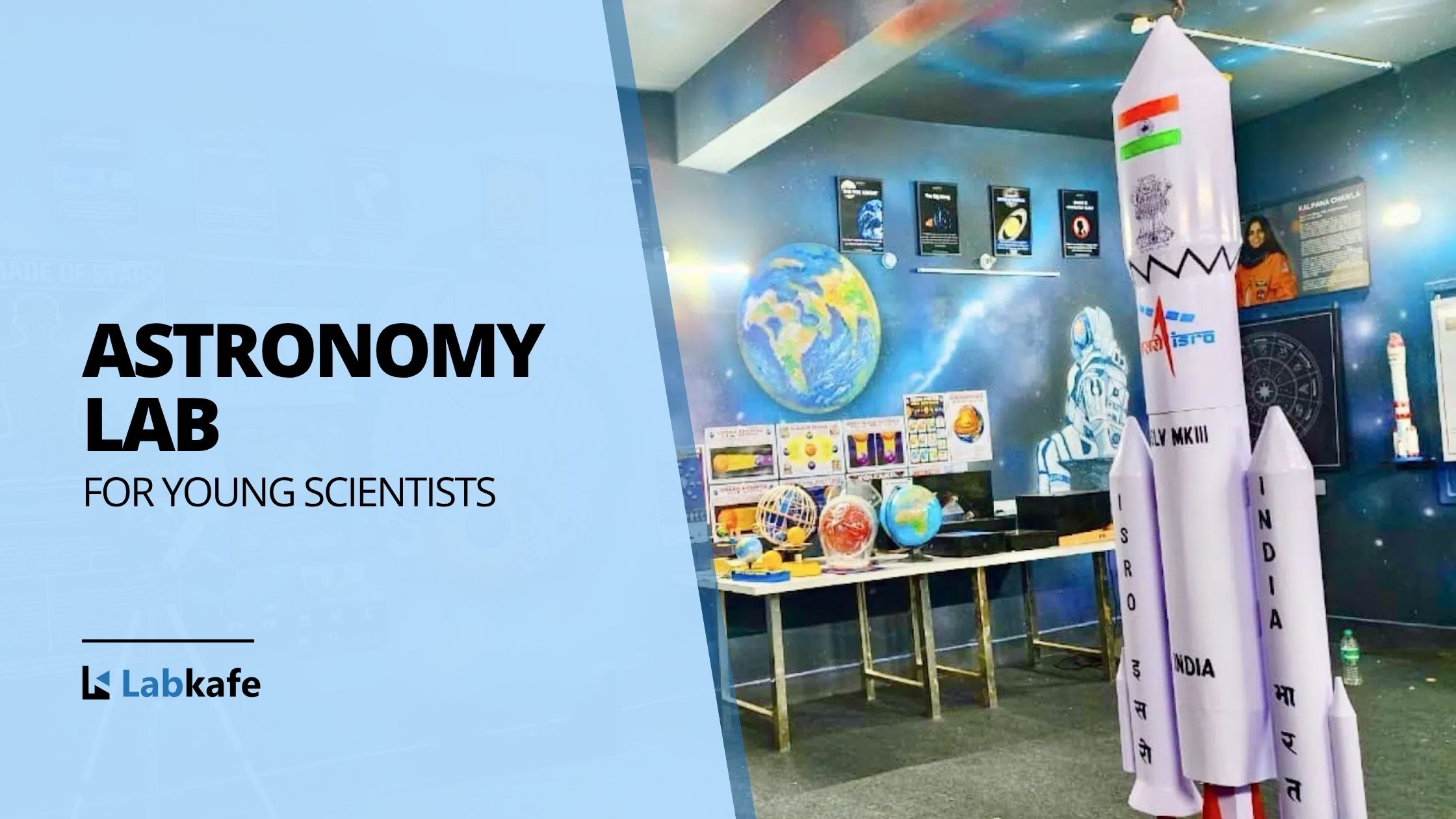







Leave a Reply